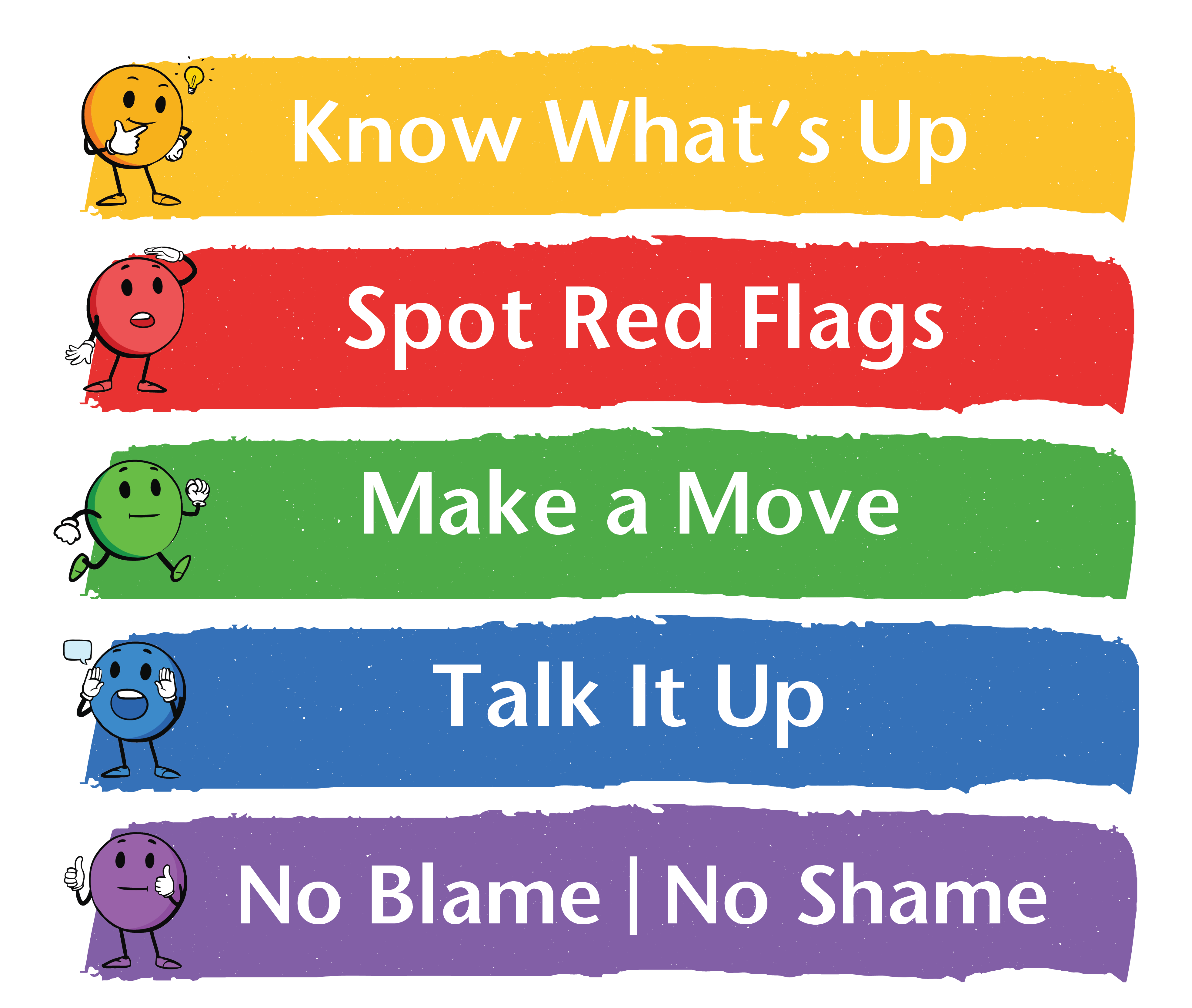 No Blame | No Shame…. four words that can make a world of difference in the life of a victimized child!
No Blame | No Shame…. four words that can make a world of difference in the life of a victimized child!
1 in 4 children in the U.S. will experience some form of maltreatment in their lifetime1. In 2015, that equated to almost 700,000 children… and those are the ones we know about. By some estimates, only 1 in 10 children ever report their abuse2. It is imperative that all victims of abuse understand that their victimization was never their fault, and they should never be ashamed to tell.
MBF Primary Prevention Programs (created by the Monique Burr Foundation for Children) were developed to empower and educate students with strategies to help prevent abuse before it happens. However, we also know the programs serve as secondary prevention programs for children and youth who come forward and disclose that they have been victimized. Understanding that there is No Blame and No Shame is important for victims because of the associated long-term consequences of child maltreatment.
Victims of maltreatment need to receive support and services, and the circumstances of their abuse investigated, and when possible, prosecuted. However, many are ashamed to disclose or report abuse. Instead, they carry the burden themselves and often never receive help. Why don’t some victims report? Victims of abuse may:
- Fear they will not be believed
- Fear they are somehow responsible for the abuse and will be punished
- Receive threats if they “divulge the secret”
- Remain quiet to keep from upsetting other family members or to keep other family members/siblings safe
- Believe the abuser when they tell them this is normal and they love them
- Fear the abuser who has power over them (90% of perpetrator are known to their victims)
- Believe they are guilty because they experienced physical pleasure, arousal, or emotional intimacy
- Feel they are to blame because they permitted the abuse and should have stopped it
- Fear that they will lose the gifts or treats they often receive from the abuser if they tell
- Care about the abuser and don’t want them to get into trouble
As important as it is for children and youth to understand this Safety Rule, it is also important for adults to understand it. Whether a child discloses abuse or maltreatment, or an adult recognizes the indicators, every adult needs to know how to respond appropriately to ensure the child receives the support and services they need.
Any suspicion of abuse or neglect should be reported to your state’s child welfare agency. A list of state agencies and their contact information can be found at www.childwelfare.gov/organizations. Adults in Florida can report abuse to the Florida Child Abuse Hotline at 1-800-96-ABUSE (22873).
Remember, a child is not to blame for being abused, and parents and caregivers are not either. Predators and pedophiles are manipulative and groom children and families to allow them access to a child to abuse. Reporting abuse helps in two ways; it helps end the abuse and holds the abuser accountable, and it also provides support to parents and caregivers. Please report abuse and seek help if you:
- Have questions about the indicators of child abuse
- Have questions about the reporting process and what you might expect through the process
- Suspect abuse or neglect, or a child discloses abuse or neglect to you
- Need support to deal with your child’s abuse
- Have a child in physical or emotional crisis and need support or counseling
- Need to be connected to resources in your area
- Need emotional support as an adult survivor of abuse
Remember, victims of child maltreatment can survive and thrive, but that starts with the understanding there is NO BLAME and NO SHAME in seeking help and reporting abuse! We hope as a parent, professional, or concerned citizen you will now remember and begin to use all 5 Safety Rules to better protect all the children in your lives. Learn more about the Safety Rules and find additional resources at mbfpreventioneducation.org.
Child maltreatment is preventable and it is important for children and youth to learn strategies to help protect themselves. Check with your child’s school to see what type of prevention/safety program they may be using. If they are not using a program, encourage them to learn more and use MBF Child Safety Matters® for elementary schools, MBF Teen Safety Matters® for middle schools, MBF After School Matters® for after-school and other youth-serving organizations, and MBF Athlete Safety Matters® for youth sports groups.
Learn More
As a parent, professional, or community member, it is important to know the 5 Safety Rules that will help you protect children. MBF offers parents, professionals, and concerned community members a variety of resources to help protect children:
- Visit Online Training to take any of our free, one-hour online courses to learn more about pertinent topics related to child safety:
- Recognizing and Reporting Child Abuse/Neglect
- Real-World Safety: Protecting Children Online and Off from Bullying, Cyberbullying, and Digital Abuse
- Protecting Children from Child Sexual Abuse
- Preventing, Recognizing, and Responding to Human Trafficking
- Download the “Child Safety Matters” app at no cost from the App Store or Google Play to learn about the 5 Safety Rules and how to become a champion for children.
________________
1 Center for Disease Control and Prevention, Child Maltreatment: Facts at a Glance
https://www.cdc.gov/violenceprevention/pdf/childmaltreatment-facts-at-a-glance.pdf
2 Prevent Child Abuse Hendry County http://preventchildabusehc.org/
Categorized in: Blog, MBF Safety Rules


